British Empire

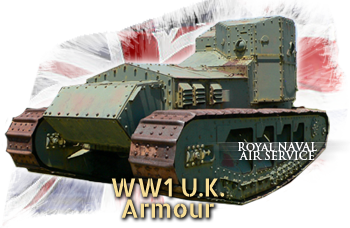
Around 250 armored military vehicles by September 1918
Light, medium & heavy tanks, armored cars
Little Willie * Tank Mark I * Tank Mark II * Tank Mark III * Tank Mark IV * Tank Mark V * Tank Mark IX "pig" * Mark A Whippet * Mark B Whippet * Mark C "Hornet" * Gun Carrier Mk.IAustin AC * Lanchester AC * Sheffield Simplex * Pierce Arrow * Rolls Royce AC * Talbot AC
Breaking the Stalemate
Just like the French, the British commanders saw all of their offensives pinned down by relentless enemy machine-gun fire. As early as 1915, marching into the open was seen as suicidal. Obstacles like the bombed landscape, the deep muddy ground and barbed wire also contributed to slow down any assault and render it virtually impossible without immense casualties. While the Germans managed to find a way to use elite infantry (the Stürmtruppen) for assaults, both the British and the French started thinking of a way of delivering infantry literally to the enemies trench entrance, dealing with casemates and machine-gun nests, and protecting infantry in no-mans land. Besides this, H.G. Wells' steam and pedrail wheels from the famous "The Land Ironclads" of 1903 were in the minds of most politicians and officers.One engineer in particular had a tremendous impact on the tank development in Great Britain, William Tritton, Managing Director of Fosters. He designed the "Little Willie", a prototype for testing many features later used in the "Mother", the prototype for the first British operational tank, the Mk.I, and later the "Whippet", the first British light tank. Also very important were Major Walter Gordon Wilson and Major General Swinton. Supporting them was the "Landship Committee", headed by Sir Winston Churchill.
The specificity of using caterpillar tractors, in large use by the army for towing artillery guns, led to the rejection of this idea by the War Office at first, and its adoption and development by the Royal Navy. Naval guns, sponsons and most of the vocabulary also came from the Navy, reflected in the genesis of the Mark I and following models. The very name "tank", a code name to deceive spies, was used to cover the first experiments at the English Lincoln William Foster & Cie. In fact, factory workers were told that they were assembling "mobile water tanks" for operations in Mesopotamia.
War Production
The British engineers devised an original approach to the trench crossing problem. Contrary to the French, whom basically developed some kind of armored boxes above a modified Holt chassis, their solution was a very long track, basically covering the entire length and height of the hull. The famous rhomboidal-shaped profile became an iconic visual landmark in tank history, immediately identifiable with WWI armored vehicles. The solution proved well adapted to the worst terrain imaginable.The Mark I however had the engineering problems of its time: too heavy for its engine, too slow and lacking agility, uncomfortable for the crew with no hull compartmentation (leading to poisoning from hot carbon gases), unbearable noise, and a rough ride. If in idea these tanks were protected, on impact the plates produced small shrapnel-like splinters on the inside of the vehicle.
Soon enough, the Germans learnt how to use mortar shells, grenades, the newly developed hollow charge "K bullet" and direct fire from artilleries against the British tanks. These limitations produced an amazing attrition rate through the first operations, during the Somme Offensive in September 1916.
Many broke down at the start, others were bogged down in large craters or broke down en route, and the rest were dealt with by German artillery. The one third which survived, however, did their job. The first offensive was a success despite terrible losses and lack of coordination, mostly thanks to the shock and awe produced by their appearance in the German lines. They also had a tremendous propaganda value, and triggered a sudden, somewhat irrational morale boost in the infantry ranks, which was badly needed after repeated failures.
After the Mark I, the Mark II was produced only for training purposes, but nevertheless, also put in action in later 1917 offensives, with disastrous effects.
The Mark III was also a training version, with some improvements which will be seen on the upcoming Mark IV and Mark V models. The Mark IV was the biggest production of the type: 420 males, 595 females and 250 tenders (supply tanks).
They incorporated early war experience in a single package, with a more powerful engine, better armour, a relocated fuel tank, and retractable sponsons. Three of them (two females and a male) fought during the second battle of Villers Bretonneux, in April 1918, against a rare German A7V. This turned into a duel between the British male and the German tank, which ended in a draw. The Mark V appeared in late 1917, but was only available in quantities by mid-1918.
This was the last wartime evolution of the type, featuring several minor improvements, including a new, long-awaited gearbox and steering system. The original Mark V was supposed to be a brand new, far more ambitious design, but because of concerns about delays on the production lines, it was ultimately rejected for a more pragmatic approach, based on the Mark IV, itself driven from the Mark III.
Apart from 200 males and 200 females, some were converted later as "hermaphrodites", bearing a gun in the left sponson, and two machine guns in the right one. They were put to the test on the 4th of July 1918, during the Battle of Hamel, in which 50 supported the Australian troops advance. After the war, some fought with the Russian "Whites", and were ultimately captured by the "Reds".
In 1918 a different tank appeared under the official designation of Medium Mark A, soon called "Whippet". It was not truly a light tank, but with half the weight of the Mark IV and a pair of torque-abundant engines (also used in the London two-decker buses of the time), it was considered fast by those times standards, designed to exploit breakthroughs on the battlefield made by heavier tanks. This led, in 1918, to the development of a separate branch of fast medium and heavy models.
1919 Projects and Early 20s Developments
By 1918 the Mark V was considered nearly obsolete. New projects included the Mark VI, with a completely redesigned hull. But in 1917, although a mock-up and detailed plans were ready, the committee decided to stop it in favor of the new joint US-British project, the Mark VIII "Liberty". The Mark VII was a separated project, developed in 1917 as an improved Mark I with a lengthened hull, a new revolutionary Williams-Janney hydraulic transmission and an electric starter.Out of an order of 75, three were ultimately produced and only one delivered and tested in France. The Mark VIII, was designed for mass production both in Great Britain and the USA, with a joint design filling both countries requirements. It was basically a redesigned, lengthened model (13 m or 42 feet) with the greatest trench-crossing capabilities ever achieved, a turret-like fixed superstructure with multiple machine guns, and a howitzer mounted in the front hull.
It came too late for WWI, but 100 were built by the Rock Island Arsenal, 40 by the Manchester Tank Syndicate and 11 by the North British Locomotive Co in Great Britain. They served until the thirties. The Mark IX, dubbed the "Pig", was a specifically designed supply tank and troop carrier, of which 34 were ultimately built out of an order of 200. A special amphibious model was also tested successfully, known as the "Duck".
The British Mark A Whippet also proved a sound concept and enjoyed several improvements in the field, mostly attempted by Major Philip Johnson of the Central Tank Corps Workshops in France. He fitted one with leaf spring suspensions, sprung track rollers, and later modified it even further with an epicyclical transmission from a Mark V and a powerful 360 hp V 12 Rolls-Royce Eagle. This led to the fastest tank ever built during WWI, capable of 48 km/h (30 mph). Johnson will work on the later Medium Mark D project.
The Mark A was followed by the Mark B, Lieutenant Walter G. Wilson devising a brand new, bigger (18 tons) design, with a forward superstructure, the engine at the rear, longer tracks with a rhomboid chassis and a frontal sloped glacis plate. It looked like a mix between all previous designs, bristling with five machine-guns in mini-sponsons. However, due to the rival project from Tritton, the Mark C, only 102 were produced out of an order of 450, and only 45 were accepted in service by the end of 1918. They only served in France for a couple of weeks, all others being scrapped.
The latter, called the "Hornet" was designed by Tritton chief designer William Rigby. It incorporated many improvements from the Whippet, along with a forward superstructure, a rhomboid track, sloped frontal armor and more powerful engines. It was also heavier, but its speed was still excellent. It met all requirements for the army and 6000 were ordered in 1918. None was delivered until the end of WWI, and only 50 were completed in 1919. Some served in Russia and those that remained in Great Britain were ultimately replaced by the Medium Mark I.
WWI British Tanks
Tank Mark I (1916)200 built. Males armed with two 6 pdr and 2 Lewis or Vickers machineguns in sponsons. Females armed with 4 Lewis machineguns and one Hotchkiss machinegun.
Tank Mark II (1916)
50 built. Not protected. Training only.
- Tank Mark III (1917)
50 built. Improved version. Training only.
- Tank Mark IV (1917)
1120 built. Many improvements. Frontline tank until 1918.
- Tank Mark V (1917)
400 built. Only available in early 1918. Many improvements, last evolution used during the war.
- Mark VIII (1918)
30 built. British variant of the joint US-British "liberty" design.
- Medium Mark A "Whippet" (1918)
200 built. Four or Two Vickers or Hotchkiss machine-guns.
- Mark IX "Pig" (1918)
36 built. First purpose-built APC.
- Gun Carrier Mk.I (1918)
50 built. 150 mm howitzer SPG.
WWI British Armored Cars
- Rolls-Royce (1914-1919)
120 built. Lightly armored. One Lewis or Vickers machine-gun.- Lanchester 4x2 (1914-1916)
36 built. One Vickers cal.303 LC machine-gun.- Austin 4x2 (1915-1916)
180+ built. One Vickers cal.303 LC machine-gun.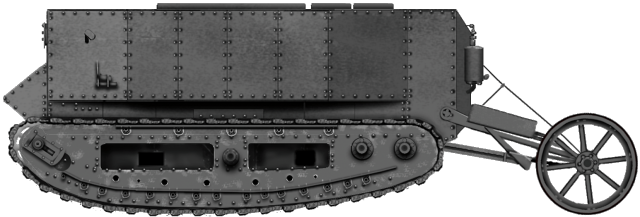
'Little Willie' was created in 1915 and is wildly regarded as the World's first tank. This was the prototype that led to the creation of the Mk.I Tank.

The Mk.I Tank was the first of the 'rhomboid' tanks. It made its combat debut at the battle of the Somme in on September 15th, 1916 at Flers-Courcelette. Results were mixed with many breaking down. At least a third of the vehicles succeeded in breaking through, however.
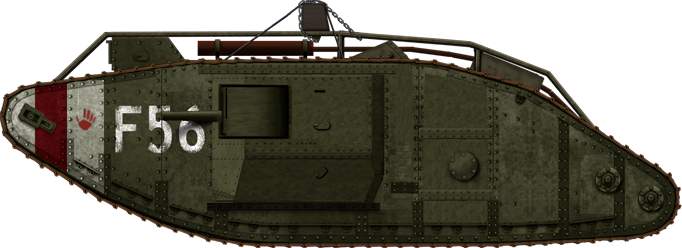
With the rhomboid design refined, the British continued to produce tanks of this shape. The MK.IV was the tank that Britain built the most of. Over 1000 of these were produced, they debuted on the battlefield in 1917.
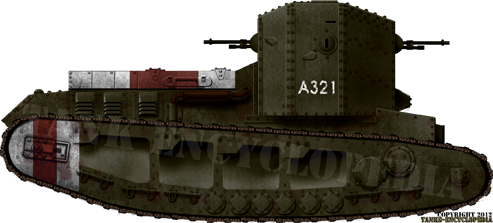
The Medium Mark A was designed as a somewhat more mobile alternative to the 'rhomboid' tanks. They were armed only with machine guns, and appeared on the battle field late 1917, early 1918.

A Male Mark I Tank with all its battle-gear, early 1917. The rear tail-wheel was meant for better steering, and the "roof" was made of a grilled framework to deflect grenades. The upper armor could barely stand against grenade shrapnel - Credits: Tanks!
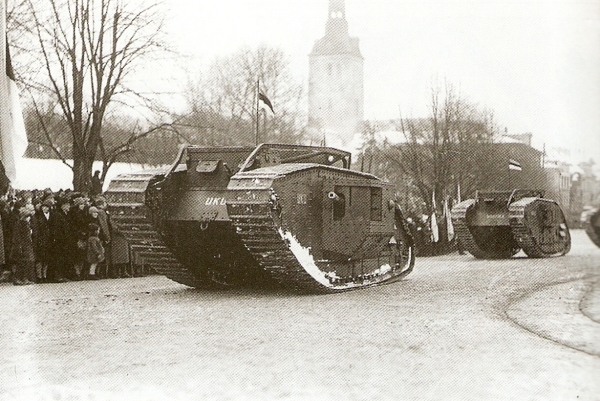
A Male Mark V composite (with two guns in sponsons) in Estonian service by 1920 - Credits: Wikimedia.
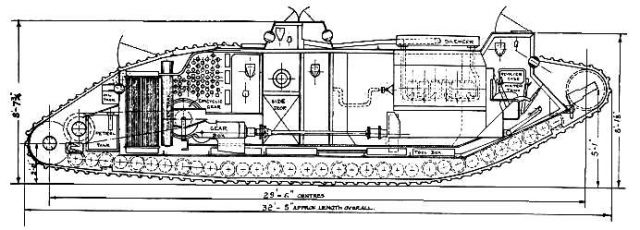
Diagram of a Mark V* (star) - Credits: Panzerfaust.de
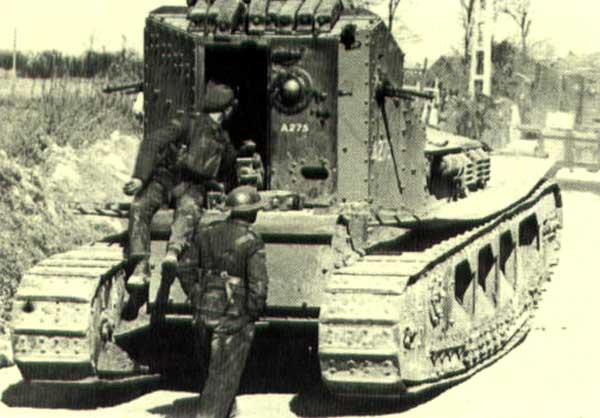
The Mark A "Whippet" was a real improvement as a concept, introducing some tactical agility on the battlefield. Only 200 were produced until the end of the war.

The Mark VI mock up. No prototype was ever built, as this improved version was dropped in favor of the Mark VIII "Liberty".
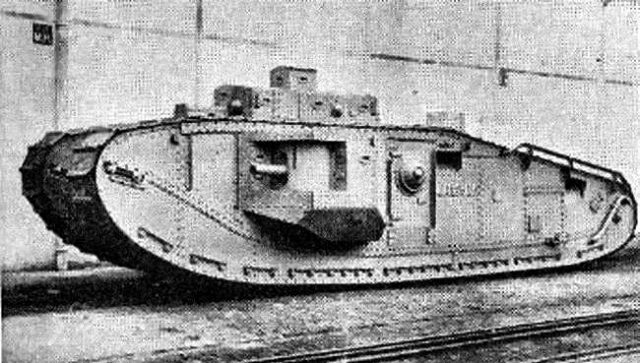
The Mark VIII Liberty, a joint Anglo-American project, planned to be built in France en masse, but later cancelled and built in both countries and small series after the war. It was the last evolution of the "lozenge" or "rhomboid" heavy tank type - Credits: Tanks!
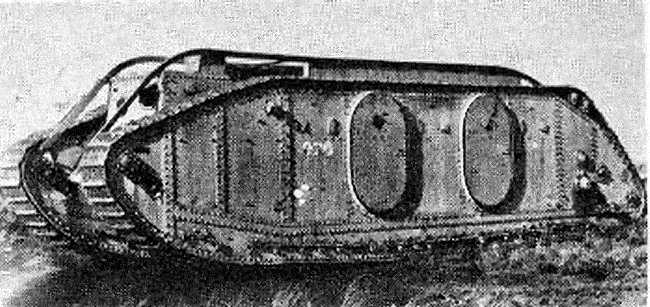
This massive model, called the "Pig", was the first troop-carrier built in Great Britain. Only a handful were operational in time, but most were used as supply tanks. They were considered underpowered. Another amphibious variant, the "Duck", was also produced - Credits : tanks!
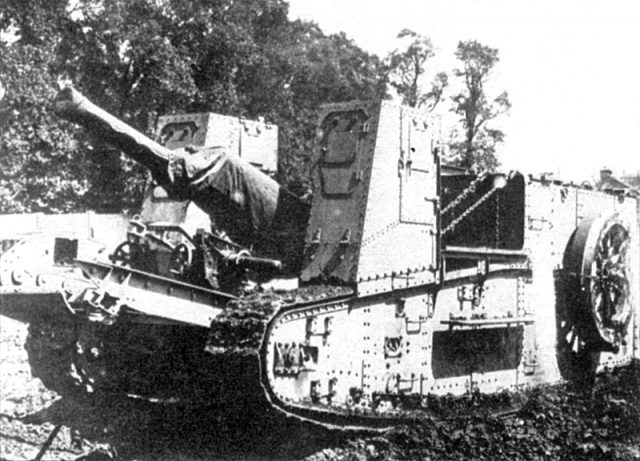
Gun Carrier Mark I. This was the world's first SPG (self propelled gun), with a 150 mm howitzer for mobile artillery support - Credits: Wikimedia

The Mark B "Whippet" was a project by Major Wilson, which previously worked on other William Tritton designs. William Tritton's efficient lobbying promoted his own Mark C, and ultimately only 102 Mark B were delivered, before and after the end of WWI - Credits: Wikimedia
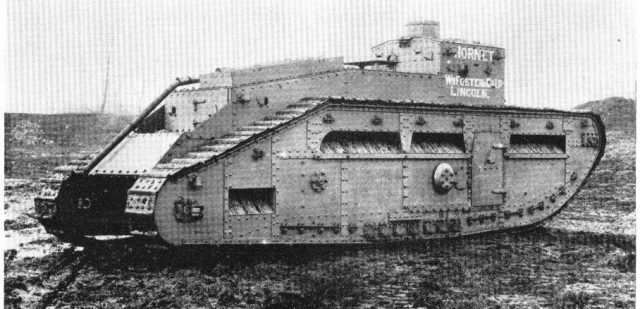
A Mark C "Hornet", Tritton's successor for the "Whippet". Only 50 were completed after the war - Credits: Wikimedia.
Centennial WW1 POSTER


The Great War
 Austria-Hungary
Austria-Hungary Belgium
Belgium British Empire
British Empire France
France German Empire
German Empire Italy
Italy Russia
Russia USA
USAWW1 tanks posters
